Three New Muscovy Ducklings
Mama Muscovy laid a dozen eggs on the floor of an old raggedy jeep at Vista Farm. In spite of her diligent care, for some reason we’ll never know, only three babies hatched today. What could be cuter than little baby ducks all yellow, brown and fluffy! Tiny little feet, tiny little beaks, tiny everything.
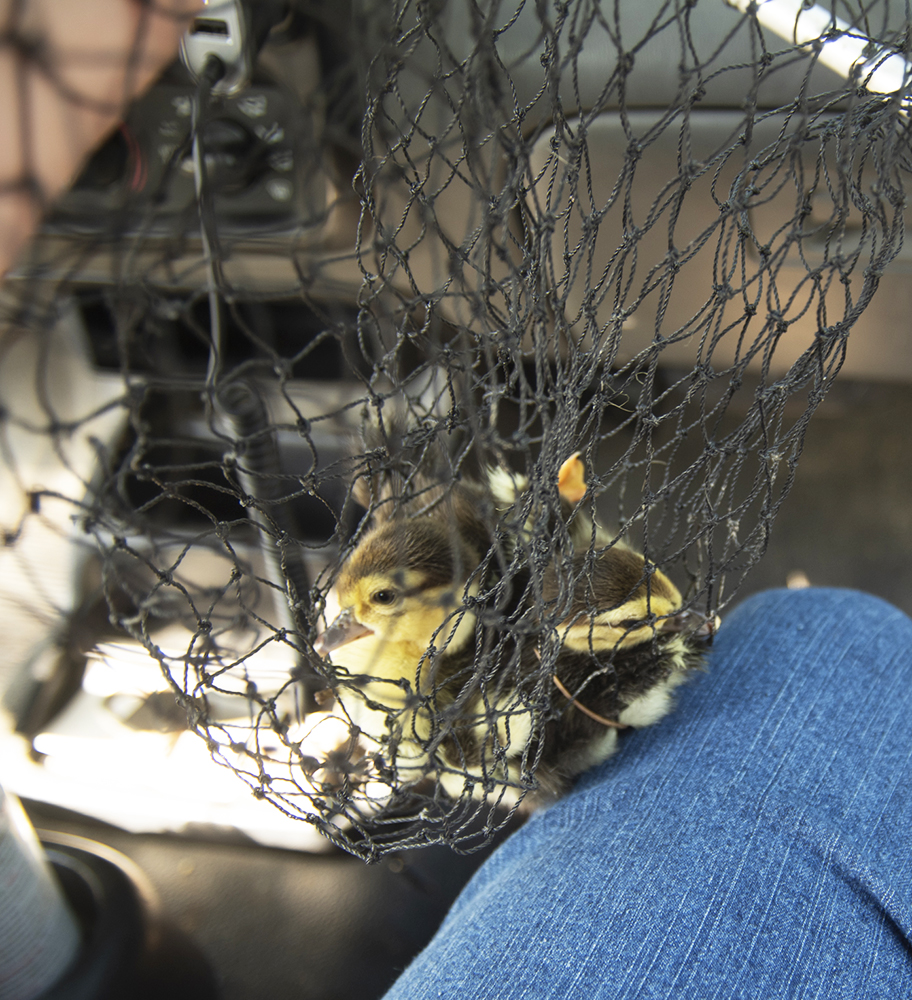
It was obvious they would die in the hot jeep with no way out and no food or water so we scooped them all up in a dip net and moved the family to Fort Quax with plenty of food and water and a couple of nesting boxes for extra close sheltering. It’s a place I wonder if Mama remembers, as this 20-foot by 10-foot aviary, wrapped in tough metal hardware cloth is where she grew up from a tiny hatchling until she and her sibling were almost ready to fly.
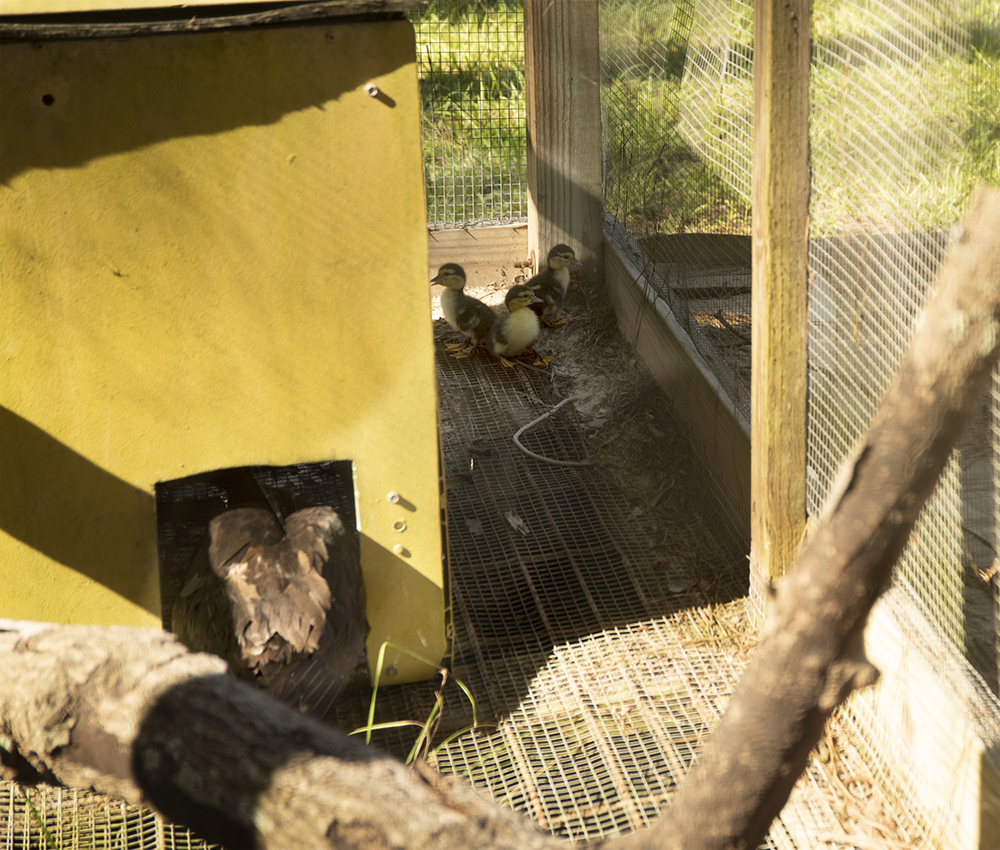
Inside there is a pink plastic kiddie pool with a ladder to climb in and blocks stacked up to climb out. No doubt by tomorrow they will have learned to swim and, while Mama has some corn, all will be happily dining on a commercial non-treated duckling food and a heaping pile of Corn Speedwell which, at least at our place, is the Muscovy’s food of choice. We rake it up by the roots and dump the plant, mud and all, into the pool where they learn to filter it for bugs and tiny organisms just like in the wild. They love the greens, too.
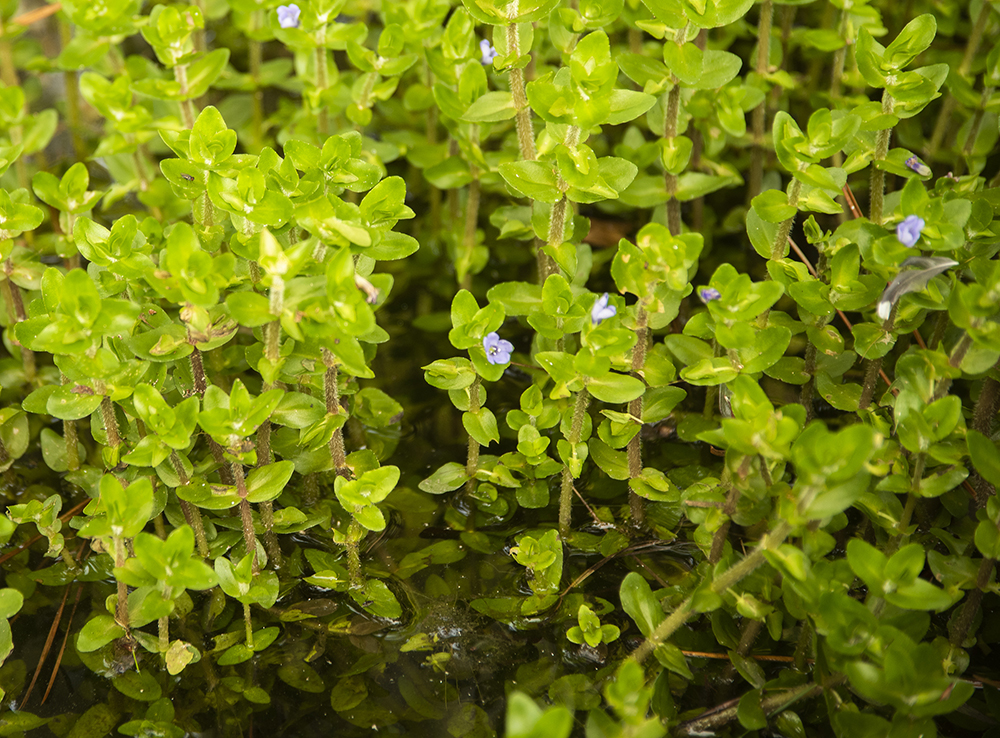
The little family will shelter inside the nesting boxes at night where Mama will keep them warm under her wings. It will be a while before the babies produce their own body heat and lanolin that keeps them dry in the water. But inside Fort Quax they are safe from predators, even snakes, so we will all sleep well.
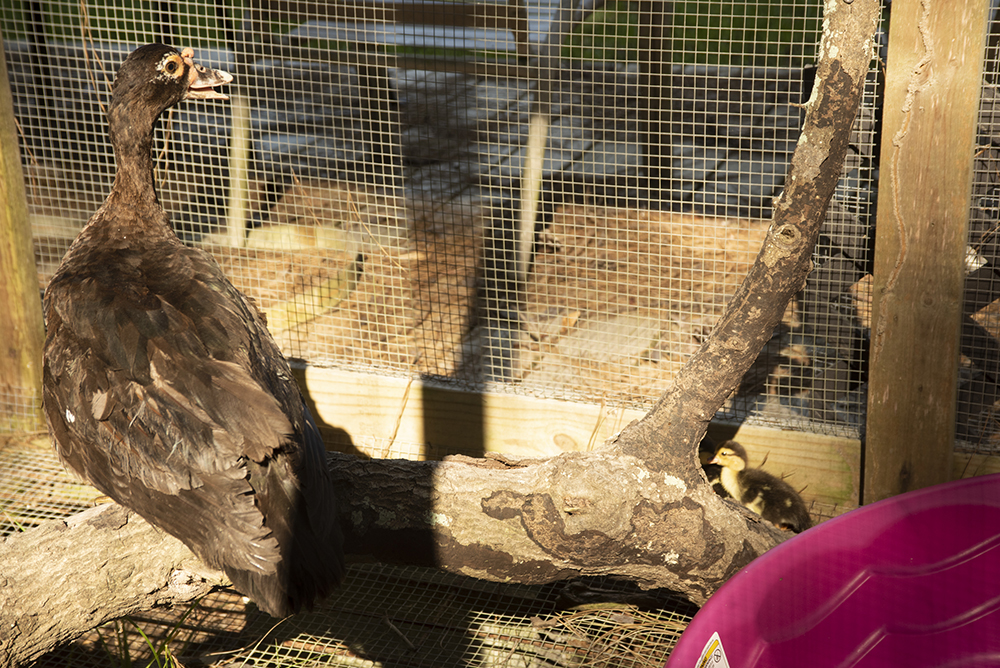
Day 2
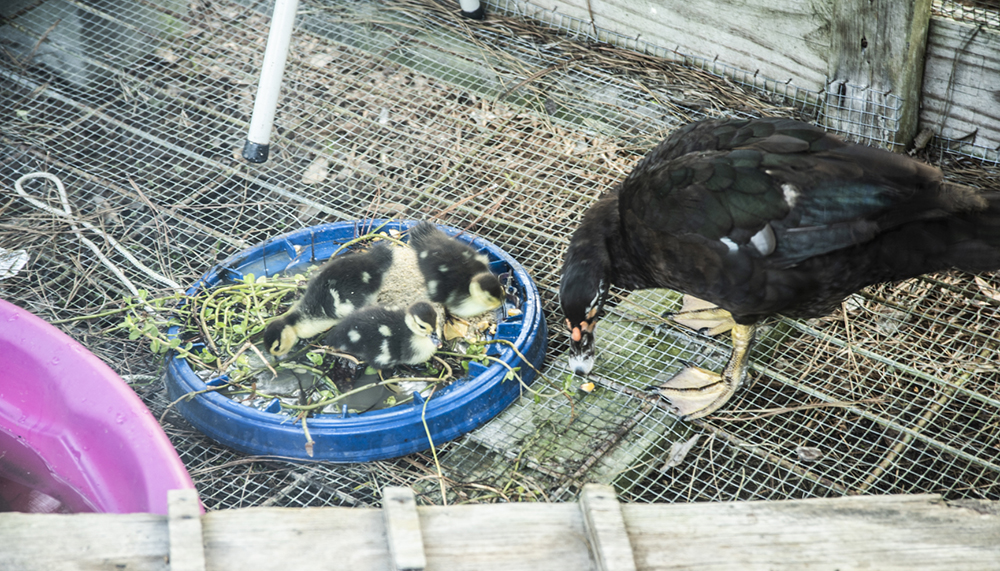
Day 2 began with learning to recognize food by watching what Mamma does.
The afternoon of Day 3 found the babies in the pool swimming like real ducks. They discovered how to climb the blocks to get in and out and that food is even better in the water. Mamma showed them how to stick their little heads in among the roots of the Corn Speedwell and filter the nutrient rich muck with their beaks.
Day 8
Mamma Hen left the babies on Day 6 and flew to the pond for some R&R. A mother can do only so much before she has to visit her friends, take a bath and eat some bugs. The babies were fine in Fort Quax, doubling in size and strength. Their little legs can now propel them from the floor into the pink pool in a flash and they are climbing on everything, eating a varied diet and putting themselves to bed at dusk inside one nesting box or the other.
On Day 8 Mamma returned and when the door was opened she flew in and resumed her duties.
Week 7 – Time to move to the Pond
After seven weeks the babies are ready to move to the pond. They can’t yet fly, but they are flapping and stretching their little wings as the large flight feathers are beginning to grow in. They are ravenously hungry and have outgrown the pink kiddie pool. Mama prefers to be with them and waits at the door to Fort Quax to be let back in every evening. Early one morning the Captain and our helper Adam set a big cage inside Fort Quax and herded the little family inside. They set the cage with Mama and the three babies in it into the back of the truck and slowly carry them to the pond where the curious little ducks craned their necks to see new sights. The door opened and out they pranced. Mama Muscovy led her brood, one after the other directly to the water’s edge and, with a Ya-Ya Sister and and the big, white male close by, “like ducks to water” they began swimming and exploring. After a quick tour of the immediate area, Mama began educating them on what great stuff they can find in the muck on the bottom, where the best bugs can be found and which seeds on which grass are the tastiest. The white male wasted no time putting them in their proper place in his pecking order, but Mama was quick to put herself in the middle.
These Muscovys began life as tiny little hatchlings we saved from being eaten by a blue heron, a bass or a hawk to three healthy juvenile ducks curious about their world and able to find their own food. Soon they will spread their wings and make their first lap over the pond. What a perfectly glorious moment that will be for them. Until then Mama will take her turn standing watch through the night with her sisters and the white male and with luck her little brood will live long lives at the pond.
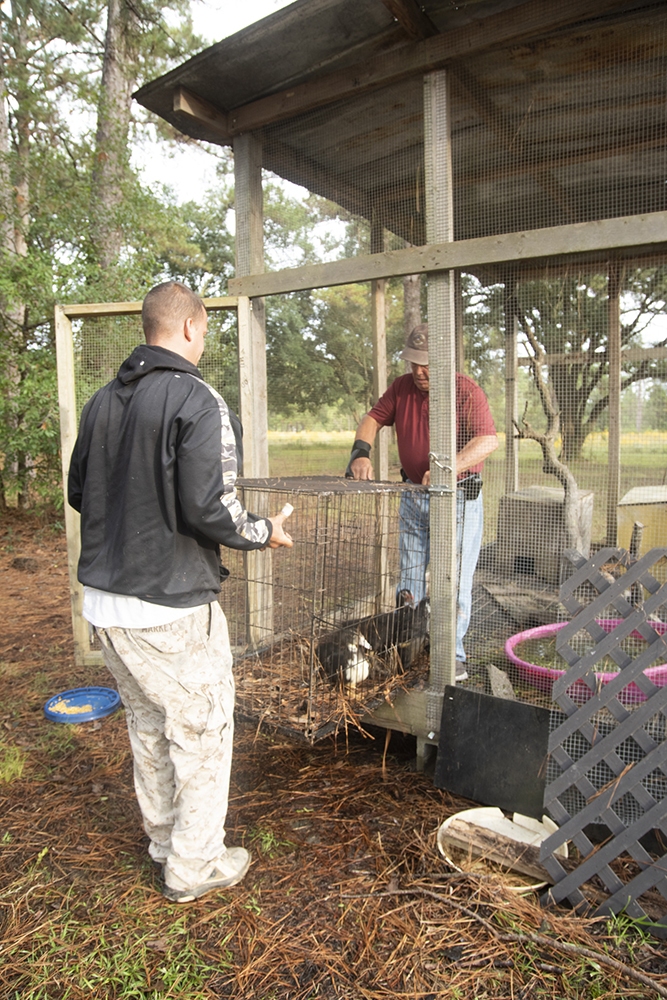


The Captain and crew herd the babies and Mama into a cage for transporting to the pond.
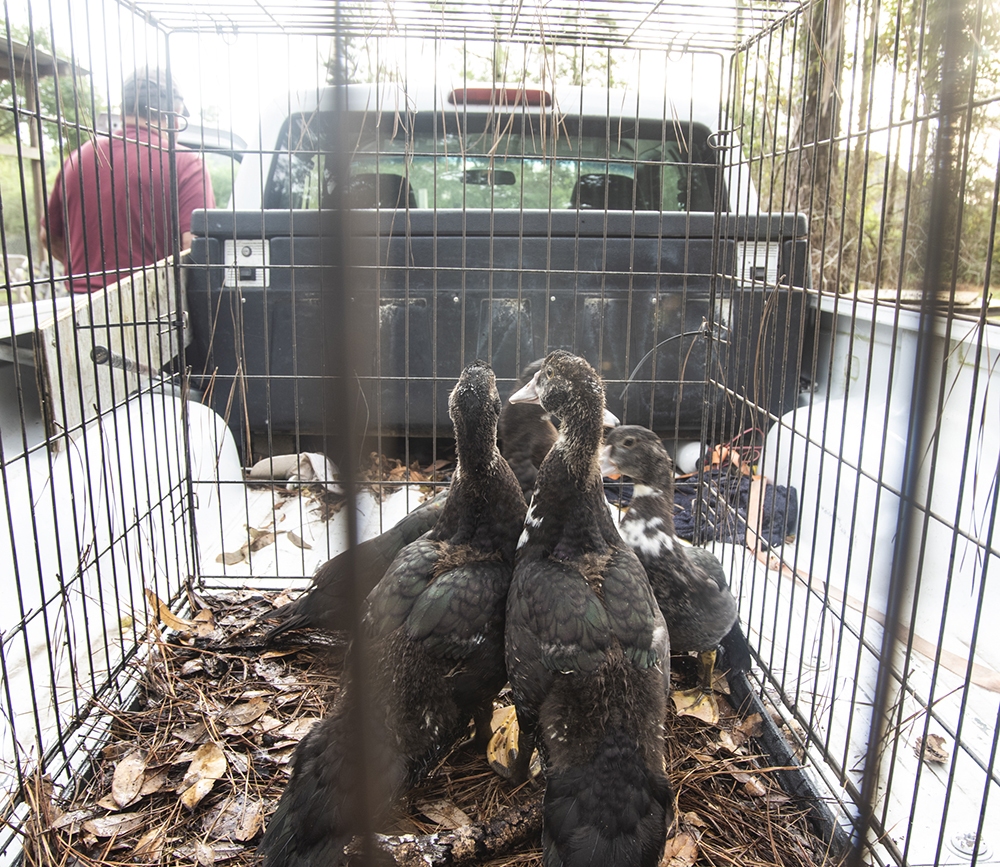

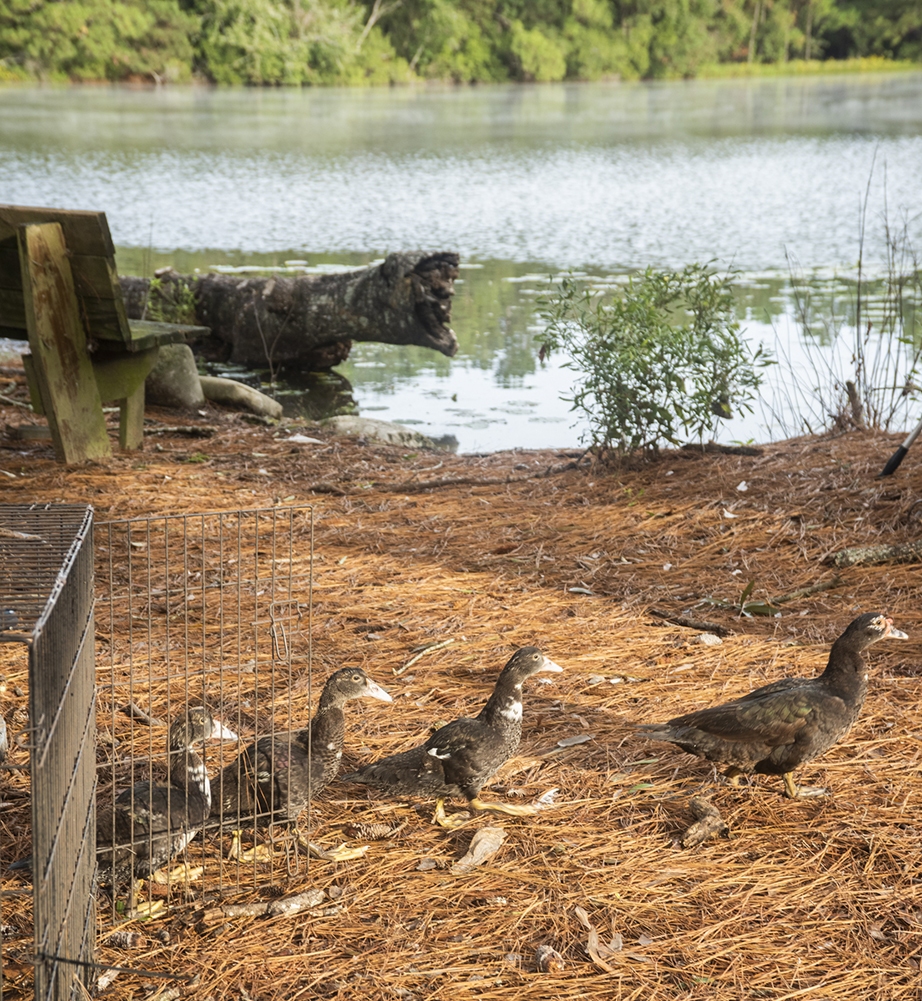
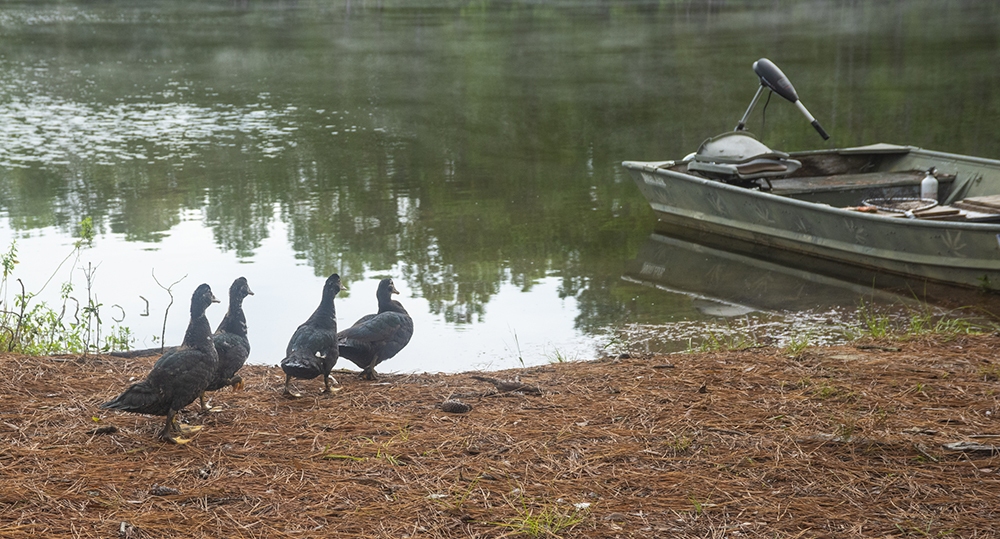
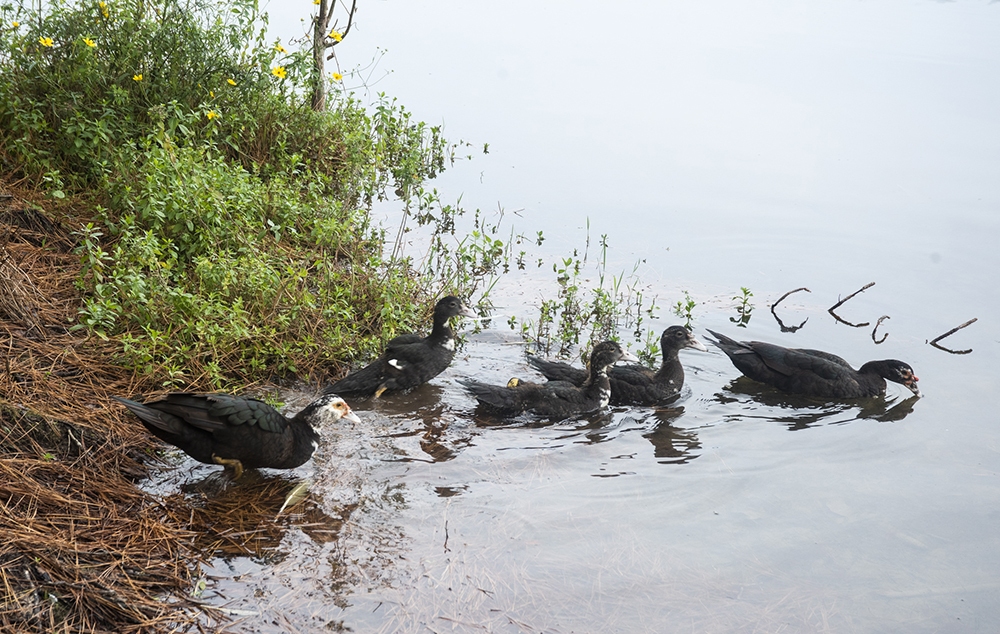
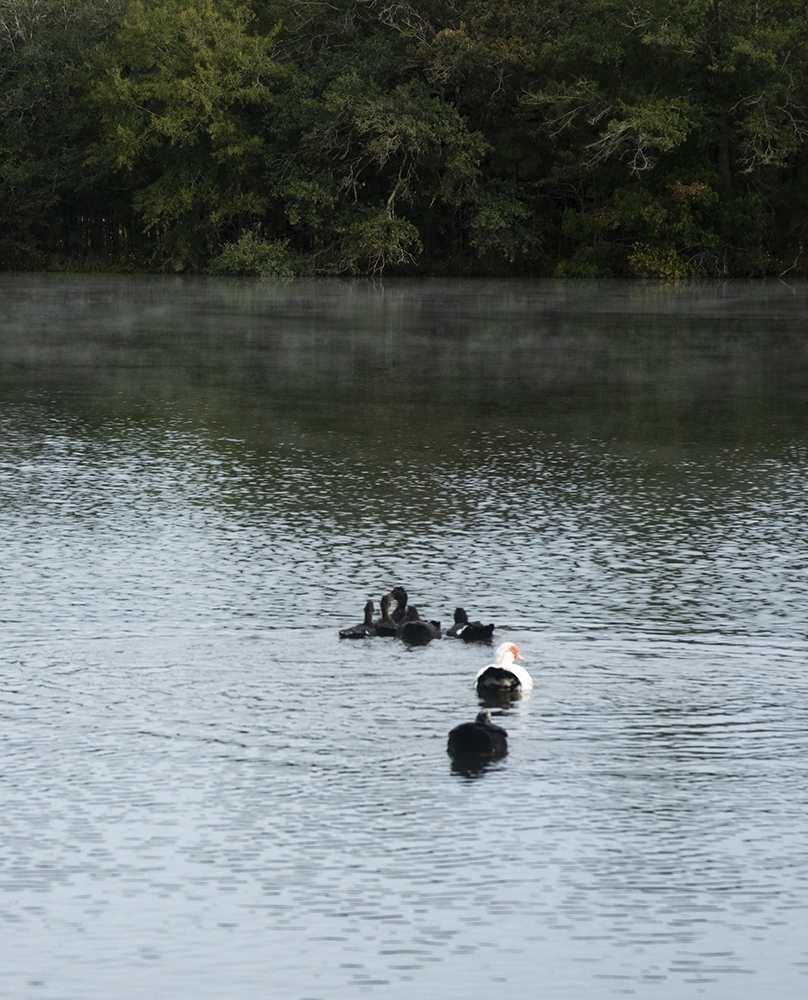

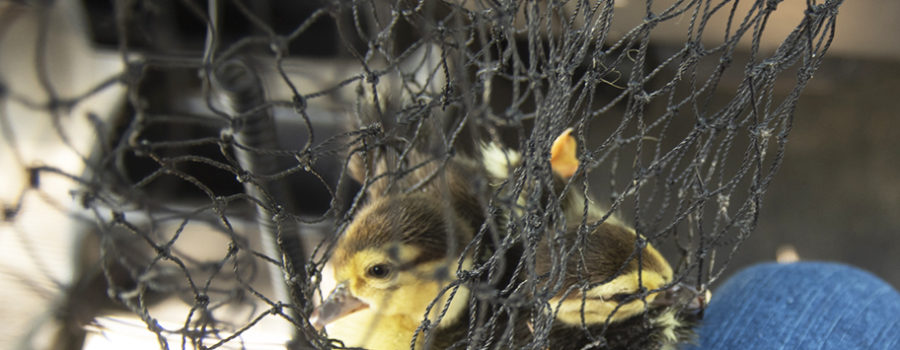
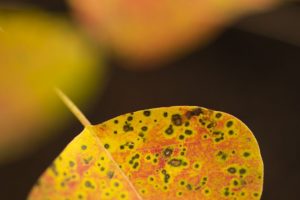
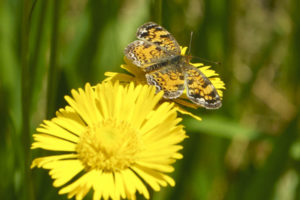
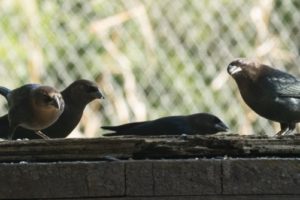
Recent Comments